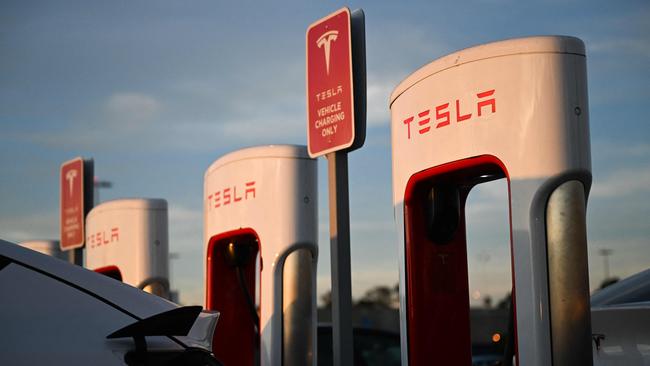Tesla’s share split will make it easier to buy. Should you?

There is nothing magical or mystical about stock splits – CSL and other leading stocks have done them on the ASX – in fact, the market typically views them as a positive, with management more predisposed to a split with an expectation of the price appreciating post the undertaking.
The way it works for every one Tesla share you had – you now have three and they are each worth a third of the original share. Importantly, a company’s valuation based on fundamentals such as price to earnings, dividend yield or enterprise value to sales revenue remain unaltered.
All that changes is the nominal price value of the share: At Tesla it is moving from around $US900 ($1294) per share to $US300. On balance, a split makes shares more affordable and accessible to retail investors and assists with employees managing their exposure.
Given how much of a roller coaster ride Tesla investors have been on in 2022, I wonder if the stock split is a peace offering from the company’s chief executive Elon Musk and his management.
In 2022, investors have been confronted with more than a few distractions from Musk.
On top of that, headwinds from China’s Covid-19 lockdowns to ongoing supply chain problems, cost input inflation, as well as an unfriendly US Federal Reserve, have made for a tough operating and investing environment.
Tesla shares have responded to all these travails with the price down some 16 per cent year-to-date, although a 42 per cent rally off the June lows has helped the stock generate a 26 per cent return over the last 12 months. Despite Musk-led distractions, long-term investors are pragmatic and accepting that the engineering genius of Musk goes together with his eccentric and often more controversial personality traits.
However, there is no denying the Twitter takeover “circus” – as coined by Dan Ives from Wedbush Securities – has contributed to investor worries in what is already a challenging year and arguably has likely created a lingering discount in valuation. As the October court battle between Musk and Twitter looms large, it is safe to assume that having sold more Tesla stock for the just-in-case scenario, that Musk will acquire Twitter at the right price; otherwise, investors might have to dig deep for un ugly, protracted litigation process.
Operationally, Tesla has navigated multiple hurdles and with the China lockdowns in the rear-view mirror, Tesla’s June run rate hit 125,000 vehicles per month or 1.5m annually, more than 50 per cent growth on the previous year.
Another factory announcement was flagged by year end at the annual meeting, and the company aiming for 10-12 factories with production capacity of 1.5 million to 2 million vehicles annually to achieve their 100 million vehicle goal by 2032.
Spiralling European energy costs remain a risk for the commissioning of the new Berlin giga-factory, which is aiming for 5000 vehicles per month by year end.
On the other hand, Tesla is a beneficiary of the US’s newly enacted Inflation Reduction Act. The best-selling Tesla Model Y and Model 3 are both eligible for the $US7500 EV tax credit, starting January 1. This will afford Tesla some scope to raise prices without impacting affordability according to commentators.
Although analysts have been slow to update earnings forecasts, Tesla with a 70 per cent share of the US electric vehicle market and expanding volume capacity out of the Austin giga-factory, added to the 700,000-unit production from California places the company in the driver’s seat when it comes to meeting growing demand.
Research firm CFRA recently updated earnings forecasts for Tesla off the back of the newly enacted tax credit, upping the 12-month price target to $US1245 pre-split ($US415 post-split) from $US1100 ($US367 post-split), suggesting upside of some 14 per cent.
In an investing world fraught with bearish concerns over recession, inflation and higher rates, the upside potential for Tesla shareholders based on the bullish targets is appealing.
Danielle Ecuyer is the author of Shareplicity







Tesla – the most popular overseas stock held by Australians – is readying for a 3-for-1 stock split.